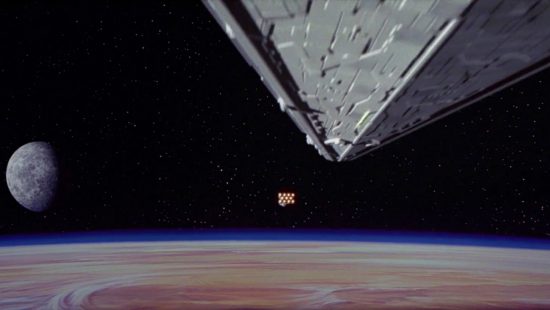John Dykstra looks back on Star Wars and forward to the Oscars

 Along with launching the career of John Dykstra, who would go on to receive a Lifetime Achievement Award from Visual Effects Society in 2014, the original Star Wars (1977) gave birth to a blockbuster franchise that includes three prequels and five sequels with the final installment being The Rise of Skywalker (2019) directed by J.J. Abrams. When asked about the Skywalker family saga coming to conclusion, Dykstra laughs, ‘Thank God it’s over! The interesting thing about the series is when you look at the first and last film, just between the two of them it’s the alpha and omega of what visual effects is. The first one is so reliant on having a subject in front of the camera and actually having to photograph it. While the new one is so much more generated in an alternative universe. In the box so to speak. Although the technology has improved significantly in the way that mechanical effects integrate with the live-action. The kinds of things that you can do now with mechanical effects because of the ability to do paint out is phenomenal.”
Along with launching the career of John Dykstra, who would go on to receive a Lifetime Achievement Award from Visual Effects Society in 2014, the original Star Wars (1977) gave birth to a blockbuster franchise that includes three prequels and five sequels with the final installment being The Rise of Skywalker (2019) directed by J.J. Abrams. When asked about the Skywalker family saga coming to conclusion, Dykstra laughs, ‘Thank God it’s over! The interesting thing about the series is when you look at the first and last film, just between the two of them it’s the alpha and omega of what visual effects is. The first one is so reliant on having a subject in front of the camera and actually having to photograph it. While the new one is so much more generated in an alternative universe. In the box so to speak. Although the technology has improved significantly in the way that mechanical effects integrate with the live-action. The kinds of things that you can do now with mechanical effects because of the ability to do paint out is phenomenal.”

In regards to current movies that impress him with their visual effects, Dykstra applauds the single continuous shot cinematic experience helmed by Sam Mendes (Skyfall). “The effects in 1917 are invisible both mechanical and CG. Ford v Ferrari is also really great and probably not as well recognized as it should be because the integration was flawless.” There is no shortage of movies to be celebrated for their ability to utilized visual effects to assist the storytelling. “Just look at how much material is out there. You look at The Lion King and those images are so natural. You look at the ageing effects in The Irishman and they get away playing complete scenes that are indistinguishable from the original photography. All of those I’ve just discussed I would love to see nominated for Oscars. The 10 nominees for visual effects this year we looked at the bake-off are all worthy for consideration.”











